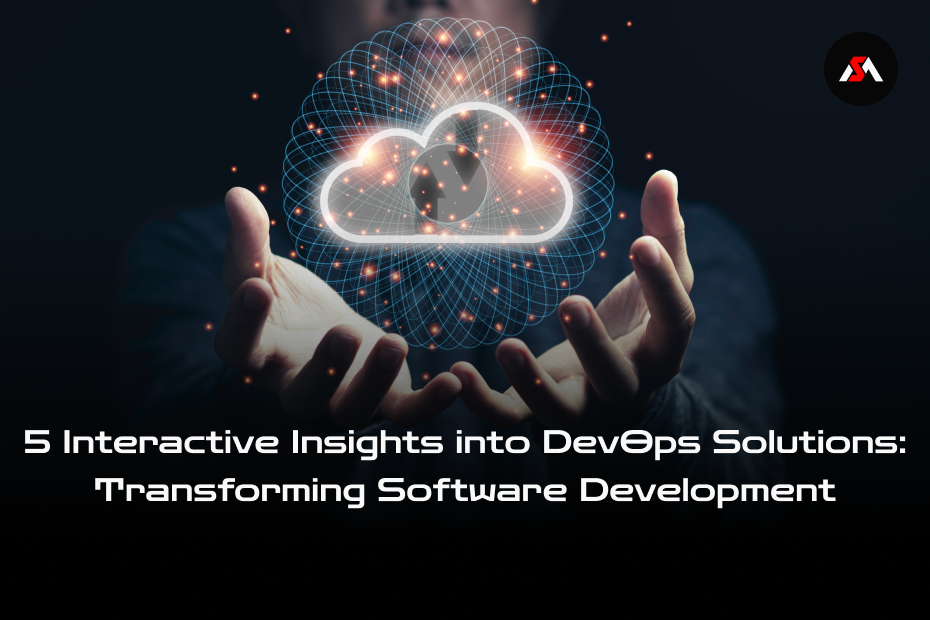What is Business Automation: Exploring the Role of Multi-Agent Systems in AI Transformation in 2025
Multi-Agent Systems: Preparing Your Business for the Future of AI Autonomy
Estimated Reading Time: 10 minutes
Key Takeaways
- Understanding multi-agent systems in AI Transformation is crucial for businesses to stay competitive.
- MAS involve networks of autonomous agents working collaboratively.
- Implementing MAS can present challenges such as communication overhead and security risks.
- Strategic planning is essential for preparing your business for wide-scale adoption of AI agents.
- Choosing between human-in-the-loop and fully autonomous AI processes depends on various factors.
Table of Contents
- Introduction
- Section 1: Understanding Multi-Agent Systems
- Section 2: The Complexity of Scaling Multi-Agent Systems
- Section 3: Preparing Your Business for Wide-Scale Adoption of AI Agents
- Section 4: Human-in-the-Loop vs. Fully Autonomous AI Processes
- Section 5: Strategic Investigational Insights
- Section 6: Conclusion
- Call to Action
- References and Hyperlinks
Introduction
Artificial intelligence (AI) technologies are advancing at an unprecedented rate, transforming the way businesses operate. Among the many innovations driving this transformation, multi-agent systems stand out as pivotal in revolutionizing collaborative problem-solving in AI.
Multi-agent systems in AI Transformations enable networks of autonomous or semi-autonomous agents to seamlessly collaborate. For businesses, understanding and implementing these systems is essential to remain competitive in today’s fast-paced market.
This article serves as a comprehensive guide on:
- Understanding agents and multi-agent systems.
- Navigating the complexities of scaling MAS.
- Preparing your business for wide-scale adoption of AI agents.
- Comparing human-in-the-loop vs. fully autonomous AI processes.
By 2025, expert projections indicate that the integration of AI agents will be vital for core business functions, pointing to a significant transformation in how we work [Salesforce, Source [5]].
Section 1: Understanding Multi-Agent Systems in AI Transformations
Definition and Functionality
What is an Agent in AI?
An agent is a software entity that plays a crucial role in AI systems. Here are its key characteristics:
- Perception: Agents gather data from their environment through sensors.
- Processing: They process this information to make informed decisions.
- Action: Agents act upon the environment using actuators to achieve specific goals.
What are Multi-Agent Systems (MAS)?
Multi-agent systems (MAS) consist of multiple interacting intelligent agents within a shared environment.
- Agents can be either autonomous or semi-autonomous.
- They may collaborate or compete to achieve their objectives.
- MAS handle complex tasks that individual agents cannot manage alone.
Key Characteristics of MAS
- Autonomy: Agents operate without direct human intervention.
- Interactivity: They communicate and cooperate with each other.
- Decentralization: Control is distributed; no single agent governs the system.
- Scalability: MAS are designed to accommodate a growing number of agents and increasing complexity.
Functionality of Agents in MAS
- Perception: Data gathering from the environment.
- Reasoning: Analyzing data for decision-making.
- Action: Performing tasks or conveying decisions.
- Learning: Some agents use machine learning to adapt over time.
By understanding these fundamentals of multi-agent systems (MAS), businesses can prepare themselves for their implementation and integration [Inclusion Cloud, Source [4]].
Roles and Real-World Applications
Multi-agent systems find application across various sectors. Here’s a look at some examples:
Healthcare
- Role of Agents: Monitor patient vitals and manage patient care.
- Application Example: Agents can identify health anomalies in real-time and alert medical professionals.
Finance
- Role of Agents: Conduct algorithmic trading by analyzing market conditions.
- Application Example: Agents can execute trades rapidly based on market trends.
Logistics and Manufacturing
- Role of Agents: Optimize supply chains by forecasting demand.
- Application Example: Agents may reroute shipments in response to unforeseen delays.
Education
- Role of Agents: Serve as personalized AI tutors.
- Application Example: Agents modify educational content based on student performance metrics.
IT and Security
- Role of Agents: Safeguard networks and detect anomalies.
- Application Example: Agents can isolate compromised segments of a network to prevent further intrusions.
These applications highlight the versatility and importance of agents and multi-agent systems (MAS) across diverse industries [Ioni.ai, Source [1]] & [Inclusion Cloud, Source [4]].
Section 2: The Complexity of Scaling Multi-Agent Systems
Challenges in Business Environments
As businesses adopt multi-agent systems (MAS), they may encounter several challenges that can complicate their deployment:
Communication Overheads
- Explanation: With an increasing number of agents, the amount of communication between them grows significantly, leading to potential congestion.
- Impact: This can result in delayed responses and overall system inefficiency.
System Integration
- Explanation: Integrating MAS with existing legacy systems presents a challenge as compatibility must be ensured.
- Impact: This can lead to increased costs and disruptions in business processes.
Reliability and Performance
- Explanation: Scaling may result in conflicting actions without proper orchestration.
- Impact: It introduces unpredictable system behavior, making it difficult to maintain performance.
Security Risks
- Explanation: The addition of more agents can heighten exposure to cyber threats.
- Impact: This creates a higher likelihood of data breaches and loss of sensitive data.
Understanding these challenges is critical for businesses aiming to implement multi-agent systems effectively [Salesforce, Source [5]].
Section 3: Preparing Your Business for Wide-Scale Adoption of AI Agents
Strategic Steps for Effective Integration
To integrate multi-agent systems (MAS) successfully, businesses should consider strategic steps:
Infrastructure Assessment
- Data Pipelines: Establish robust data pipelines that accommodate high-volume data flows with low latency.
- Computational Resources: Invest in scalable cloud infrastructures that support varying workloads.
- Secure Communication Protocols: Implement strong security measures for agent interactions.
Invest in Modular Frameworks
- Benefits: A modular design simplifies both development and integration.
- Recommended Frameworks:
- JADE (Java Agent DEvelopment Framework): A well-regarded platform for developing MAS solutions in Java.
- Agent Development Kit (ADK): Google’s toolkit streamlines building multi-agent applications efficiently [Google Developers Blog, Source [3]].
- Best Practices: Select frameworks that promote ease of customization and scalability.
Training and Change Management
- Staff Upskilling: Provide training to enhance team understanding of AI and MAS technologies.
- Organizational Culture: Foster an environment that embraces innovation and AI technologies.
Iterative Deployment
- Pilot Projects: Launch small-scale tests to determine feasibility in specific areas.
- Evaluation and Scaling: Review results, gather feedback, and refine systems before broader implementation.
Compliance and Ethics Considerations
- Regulatory Compliance: Ensure all MAS implementations align with industry regulations (e.g., GDPR).
- Ethical AI Practices: Deploy guidelines to minimize bias and ensure fairness in decision-making.
These strategic approaches will maximize the efficiency and effectiveness of multi-agent systems (MAS) in a business setting [Multimodal.dev, Source [2]].
Section 4: Human-in-the-Loop vs. Fully Autonomous AI Processes
Definitions and Comparisons
Understanding the difference between human-in-the-loop systems and fully autonomous AI processes is crucial:
Human-in-the-Loop Systems
- Definition: These are systems where human operators participate in the decision-making process of AI agents.
- Pros:
- Enhanced control over outputs.
- Simplified compliance with legal and ethical standards.
- Cons:
- Slower decision-making.
- Potential limitations in scalability and efficiency.
- Typical Use Cases: Examples include healthcare diagnostics requiring a physician’s approval and finance approvals for significant transactions.
Fully Autonomous AI Processes
- Definition: Systems where agents operate independently with little to no human intervention.
- Pros:
- Rapid processing of tasks.
- High scalability without human constraints.
- Cons:
- Increased risks associated with incorrect decisions.
- Complexity in real-time monitoring and adjustments.
- Typical Use Cases: Examples include autonomous supply chain logistics and real-time stock trading algorithms.
Choosing the Right Level of Autonomy
Making the right choice between human oversight and full autonomy depends on several factors:
- Organizational Risk Tolerance: Evaluate potential impacts of agent errors on the organization.
- Regulatory Requirements: Identify sectors with mandates for human oversight.
- Process Criticality: Assess how vital the automated processes are to overall business operations.
Balancing Innovation and Safeguards
- Hybrid Approaches: Design systems where each component’s level of autonomy can be adjusted as needed.
- Regular Audits: Set up protocols for ongoing monitoring and assessment of agent actions.
Selecting the appropriate level of autonomy helps businesses maximize the benefits of preparing your business for wide-scale adoption of AI agents while safeguarding their operations [Salesforce, Source [5]].
Section 5: Strategic Investigational Insights
Driving Strategic Growth with Multi-Agent Systems
Sales and Marketing Enhancements
- Dynamic Campaigns: Agents can analyze customer preferences to tailor marketing efforts.
- Multi-Channel Integration: They can harmonize efforts across various channels like social media and email.
Emerging Roles – Agent Orchestration
- Agent-in-Chief:
- This role oversees AI agents, ensuring strategic alignment and ethical standards.
- Benefits:
- Promotes alignment of AI projects with corporate goals.
- Integrates human insights to enhance AI-driven decisions.
Future Trends in MAS
- Secure Agent Orchestration: The focus on security will increase as MAS become more prevalent.
- Standardization: New standards for agent interoperability will emerge, enhancing collaboration.
- Integration into Core Workflows: MAS will become integral to daily operational processes.
Case Studies
- Healthcare: Hospitals utilizing MAS for monitoring patient health report faster emergency responses and improved patient outcomes.
- Finance: Banks employing MAS for fraud detection have shown a marked decrease in incidents of fraud.
- Retail: E-commerce platforms adopting agents to personalize shopping experiences have seen significant sales increases.
Research and Development Recommendations
- Invest in Innovation: Policies that encourage the allocation of resources towards MAS development will yield long-term benefits.
- Partnerships and Collaboration: Collaborating with technology firms or academic institutions specializing in AI can accelerate innovation.
In summary, implementing multi-agent systems (MAS) effectively can drive significant strategic growth and operational improvements [Ioni.ai, Source [1]] & [Salesforce, Source [5]].
Section 6: Conclusion
Recap of Key Points
Understanding and adopting multi-agent systems (MAS) is vital for modern businesses. The previously discussed challenges and solutions demonstrate how to scale MAS effectively while choosing between human-in-the-loop vs. fully autonomous AI processes ensures risk is managed.
Future Outlook
Organizations ready for wide-scale adoption of AI agents will position themselves as market leaders through innovation. Adopting MAS offers strategic advantages essential for long-term success.
Final Thoughts
Integrating multi-agent systems represents a transformative approach to business operations. As AI technology continues to evolve, the adoption of MAS will enable companies to harness this potential fully.
Call to Action
We invite you to:
- Explore further resources to implement multi-agent systems.
- Reflect on your current AI strategies and identify areas for improvement.
- Schedule consultations with AI specialists for tailored MAS solutions.
Share this article within your networks to spark discussions about the future of AI in business!
References and Hyperlinks
- Ioni.ai – Multi-AI Agents in 2025: Key Insights, Examples, and Challenges
- Multimodal.dev – Best Multi-Agent AI Frameworks
- Google Developers Blog – Agent Development Kit: Easy to Build Multi-Agent Applications
- Inclusion Cloud – Multiagent Systems Guide
- Salesforce – The Future of AI Agents: 2025
Previous Blog Posts:







